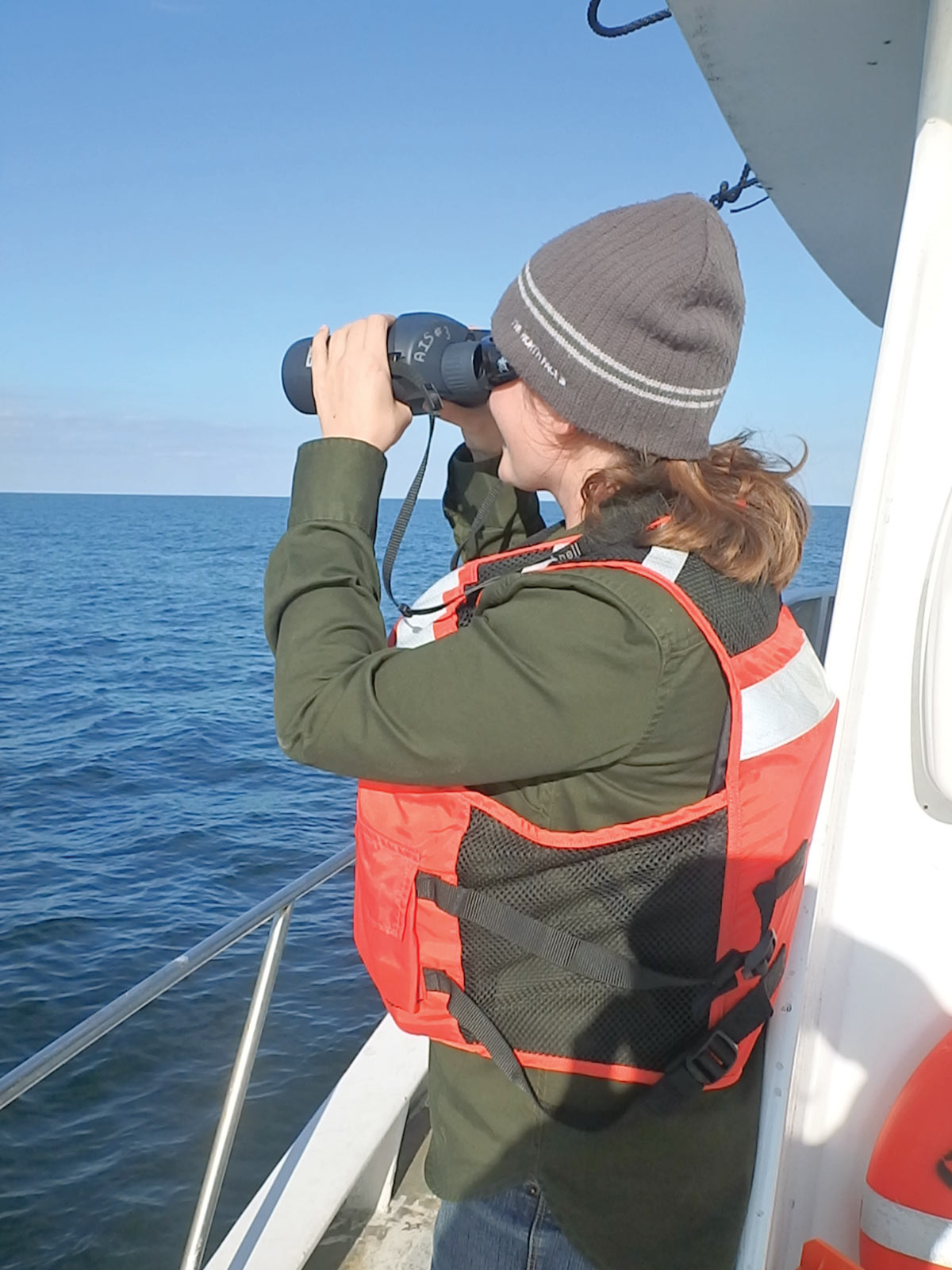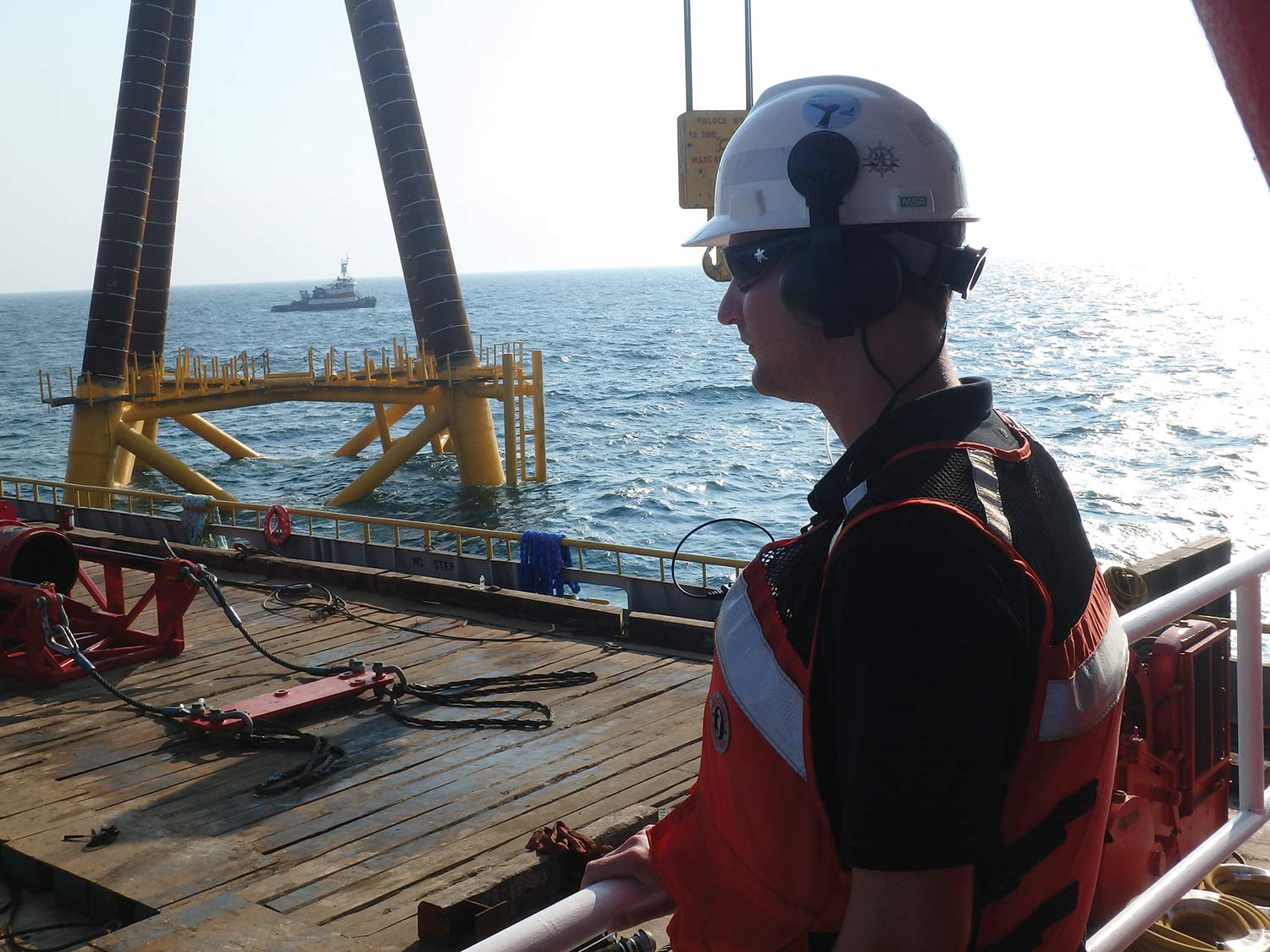Protect
AIS
s they look to develop Alaska’s resources, oil and gas companies, as well as the state and federal agencies that regulate them, have to strike a delicate balance between meeting the needs of those in the business of fossil fuels and protecting the fish and animals that could be negatively affected by exploration and ongoing operations.
For this reason, oil and gas companies employ a number of people—ranging from offshore marine mammal observers to onshore environmental scientists—to study the environment at potential exploration sites, document animal interactions, perform ongoing field studies, and mitigate adverse effects that might be caused by human activity.
Established in 1988, AIS is primarily engaged in offshore data collection on commercial and recreational fisheries and protected species monitoring during at-sea commercial operations. The company has offices in Alaska, Washington State, New Jersey, and Massachusetts and has provided protected species monitoring on the LNG pipeline project in Cook Inlet and in the Gulf of Mexico following the Deepwater Horizon oil spill.
AIS monitors for protected species during geophysical and geotechnical surveys as well as during offshore construction of wind turbines. In the case of the Deepwater Horizon spill, the company was instrumental in making sure that sensitive marine wildlife such as sea turtles weren’t harmed while BP was burning or skimming the spilled oil.
“Our role was to observe for marine wildlife before the oil was ignited to make sure that the area was clear,” says Szymanski. “We were also on hand to document any marine wildlife interactions and to continue to observe the area while it was burning. While we were put in place by the federal government, we were actually paid by BP; in most of the work for the oil and gas industry, we are employed by private companies.”
He adds that AIS also takes a proactive role in oil spill response and preparedness, participating in regional oil spill contingency planning exercises by providing estimates on staff capacity during periodic drills. “By employing a large cadre of fulltime field personnel experienced in at-sea data collection, we are prepared to respond to emergencies anywhere in the United States,” Szymanski says.
The act prohibits the “take” (take in the context of MMPA includes when an animal is harassed, fed, hunted, captured, collected, or killed) of marine mammals without a permit; however, with authorization, take of these animals is permitted when it is incidental to otherwise legal activities, such as construction projects, scientific research projects, oil and gas development, and military exercises, provided certain findings are anticipated. When an incidental take authorization is issued under MMPA, NOAA Fisheries requires that a trained, independent, third-party protected species observer be utilized.

AIS
According to Laws, there are two general purposes behind the observer role: the first is mitigation monitoring, which is real-time observation to determine when and if mitigation implementation is required, and the second is prescribed monitoring, which is required to understand the level of take that occurs.
“For example, in mitigation monitoring, there may be a seismic survey going on with an established exclusion zone,” says Laws. “Observers monitor marine mammals’ distance from the vessel, and if the animals come within that distance, they shut down the sound source.”
“By increasing our knowledge regarding the direct or indirect effects that certain actions have on marine mammals, it can help us analyze the efficacy of the mitigation efforts as well as help us better protect these animals in the future,” says Laws.
Saltwater Inc. is headquartered in Anchorage and has spent the past thirty years collecting data on fisheries in the Pacific and Atlantic Oceans (including the Gulf of Mexico) for government agencies, research organizations, and fishermen. The company also provides objective observers on ships, platforms, and onshore locations for clients (including oil and gas and construction firms), observing for protected species including cetaceans—whales, dolphins, and porpoises—as well as seals, sea lions, walrus, polar bears, sea otters, sea turtles, and, in southern climates, manatees.
“We’ve always done a lot of work for the oil and gas industry, but after the BP spill, the field changed dramatically,” explains Mithriel MacKay, director of research and education for Saltwater. “A lot of exploration closed down, and the observer industry took a dive. It is now recovering, and our job as Saltwater marine biologists is to serve as the reporting mechanism, or the eyes and ears of federal agencies, to keep track of compliance and permitting.

AIS
AIS
She gives the example of ships towing air cannons, which release huge booms at regular intervals that reverberate through the ocean substrate to detect oil and gas deposits. “A lot of this sound travels through the water, and in addition to their hearing, marine mammal body cavities respond to sound, which can have an adverse effect,” says MacKay. “We make sure that no animals are in the area at the time that the sound is put into the water.”
While asking companies to delay activities—or even to shut them down—might seem to create a contentious environment, MacKay says that their staff’s ability to explain how compliance actually supports the industry is appreciated by their clients.
“One of the values of having a highly experienced, educated team is that we can offer suggestions that they may not have thought of,” she says. “For example, we’ve suggested mitigation using a sound bubble during construction of platforms, which is basically a giant hose that surrounds the work area with a bubble curtain. The curtain dampens sound, so it protects the animals by keeping sound closer to the source.”
Vice President
AIS
“It’s like wearing a seatbelt,” she adds. “The younger generation doesn’t think twice about it, because it’s always been that way. To them, we’ve always been there. They grasp that we’re actually there in support of the project—not to shut them down.”
“We use passive acoustic monitoring, using hydrophones to listen for vocalization of target species,” says MacKay, adding that this is often used when observers can’t see the animals or when they’re working overnight. “We also use night-vision or infrared goggles, field guides, and reticle binoculars that have range finder scales built into them so that you can calculate the distance to accurately say how far the animal is from the target source.”

AIS
AIS
An observer’s qualifications may differ, depending on what the job requires. “[NOAA Fisheries] is in the process of creating standardized requirements, but a lot of very experienced people are likely to be grandfathered in,” says MacKay. “All personnel must be approved by [NOAA Fisheries] for many positions as protected species observers on a particular project, as well as pass a training course to meet standards for oil, gas, and seismic work.”
Senior Biologist
NOAA Fisheries
“AIS observers typically possess a [bachelor of science] or higher in marine biology or a related field and have demonstrated experience working at sea and possess the ability to accurately identify marine species,” says Szymanski. “All observers undergo marine safety training, and in some regions they are required to complete the BOSIET training. Additionally we develop a training program for each project that highlights the species of concern in each area.”
“In the National Petroleum Reserve-Alaska, the Bureau of Land Management dictates that certain studies need to be performed,” explains Robyn McGhee, senior environmental coordinator at ConocoPhillips. “For example, they require that a lessee conduct three years of yellow-billed loon surveys prior to project approval, as well as three years of fish abundance and distribution surveys.
“Other times, a project may require a study in order to support permitting from regulatory agencies, such as when a company wants to build an ice road on land using freshwater from nearby lakes,” she continues. “To do this, you need to establish what fish are present in that lake for subsequent permitting of water withdrawal.”
Director of Research and Education
Saltwater
“We may use these firms prior to starting a project when we want to have good baseline data prior to construction or development or while the project is underway,” McGhee says. “For example, the fish abundance and distribution survey results tell our engineers whether we need to build a bridge or a culvert to allow for fish passage. Subsequent permits oftentimes have a stipulation attached that requires further study throughout the life of the field.”
No matter whether working onshore or offshore, the importance of protected species observers and environmental scientists can’t be denied. Working together, oil and gas companies and those who provide data to protect the environment ensure that development can continue while keeping Alaska’s wildlife safe. ![]()